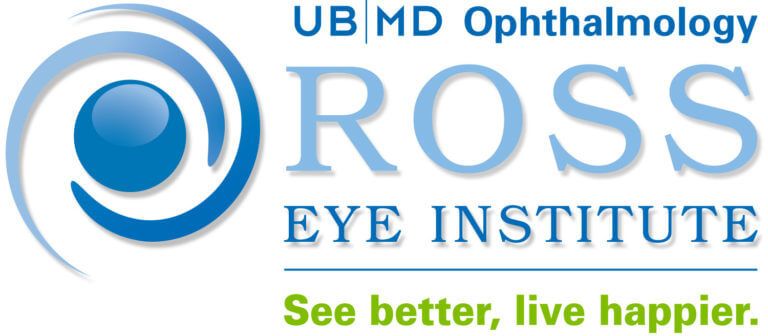Understanding Cataracts – What Are They and How Do They Impact Vision?
Other than the brain, the eyes are the most complex part of the human body. And while the complexity of the eye is necessary for its unique functionality, this same complexity means there are more possibilities for things to go wrong. It’s also why there are many different types of conditions and diseases that affect the eye. One of the most common eye conditions is cataracts. So, what is this condition and what can you do to protect your eyes?
What Are Cataracts?
Inside of our eyes, we have a natural lens that bends incoming light, allowing us to see. In normal, unaffected eyes, that natural lens is clear. However, cataracts refer to a clouding of that clear lens of the human eye. Over time, this clouding affects eyesight, causing people who have them to have blurry, dull or double vision. If left untreated, cataracts can continue to develop, leading to worsening side effects that may range from a loss of night vision to eventually complete blindness.
Am I At Risk?
The short answer is yes. As each of us gets older, we become more susceptible to cataracts, as age is the primary risk factor for their development. This is due to a gradual and natural change that occurs within the protein content in the eyes’ natural lenses, which begin to break down naturally in most people around the age of 40. In fact, age-related cataracts are so common that according to reporting done by MedlinePlus on findings from the National Institutes of Health, by age 80, half of all Americans either have a cataract or have had cataract surgery.
What Causes Cataracts?
Although aging is the primary factor to developing cataracts, some individuals may be at an increased risk. Smoking, diabetes, genetic – or family – history and extensive exposure to UV rays all increase your chances of cataracts, the American Association of Ophthalmology notes. And while most age-related cataracts develop slowly over time, ones that occur as a result of a genetic predisposition or environmental risk factors have a higher chance of cataracts forming more rapidly and impacting vision more dramatically, although each patient’s individual circumstances will determine how any particular case will progress.
Despite these largely non-discriminatory risk factors, there are good habits you can employ that may slow the formation or progression of cataracts. Making healthy decisions, such as wearing sunglasses with an anti-UV lens coating to limit the amount of UV exposure your eyes get or quitting – or not starting – smoking, can help you keep your eyes healthy and reduce your risk of forming cataracts from a non-age-related cause.
Diagnosing Cataracts
Given that cataracts are characterized by a clouding of the natural lens, it is possible to be diagnosed through a simple visual examination if the cataract has progressed enough to be visible. Some cataracts, however, especially those in the early stages of development, are more difficult to catch and require a full eye examination to diagnose.
During a full eye exam, your cataract doctor can use what is known as a slit-lamp exam. In this test, the doctor will inspect the front areas of the eye, including the cornea, iris and lens. The slit-lamp instrument features a bright light that makes it easier for the doctor to detect anything atypical in the eye, which may include cataracts or any symptoms of other eye damage or ocular disease.
Cataracts Treatment
If you are diagnosed with cataracts, treatment procedures are very effective, even though the options are quite limited.
All cataracts and their side effects range in degree and severity. In some cases, it may result in nothing more than some slightly blurred vision. If this is your experience, you may just need a new eyeglass prescription to help you see a little better.
Many times, cataract symptoms have a greater impact on a person’s vision, however, and leads to vision that progressively degenerates over time. The only way to fully treat cataracts is through surgery in which doctors remove the cloudy, natural lens of the eye and replace it with a clear, plastic artificial lens. This is known as an intraocular lens (IOL), and it is better able to refract light than the natural lens, restoring proper vision.
Cataract surgery is very common, and it is often done on an outpatient basis in an ambulatory surgery center or hospital. After surgery, it is possible that blurry vision may recur after many weeks, months or even years. While this is not prevalent, it isn’t an unusual occurrence. This recurrence of clouded vision is referred to as a posterior capsular opacification, which essentially means that a layer of scar tissue has developed over your IOL and is acting as a “secondary cataract.” In these cases, a laser procedure can create an opening in the scar tissue, restoring clear vision without the need to remove the IOL as with the original natural lens.
Pediatric Cataracts
Although they are most common in older adults, children and young adults can also develop cataracts that can cause blurred vision or even blindness. While cataracts are a serious condition for anyone, there is a greater sense of urgency around pediatric cataracts. This is due to the early onset of these cataracts during the development of a child’s eyes.
When adults get cataracts, their vision is already at a stable stage of development, making it possible to regain more normal eyesight after the cataracts are removed. If a child develops a cataract while their vision is still developing and it is left untreated, there is a high chance of it leading to serious, long-term vision problems. The distortion caused by the cataract can severely impact a developing sense of vision, and can even lead to such conditions as amblyopia (lazy eye). This may also cause the formation of irregular connections between the eye and brain which are irreversible once made.
Most pediatric cases are either congenital, meaning it was present at birth, or acquired, meaning they develop after birth and are often discovered during a routine screening or during treatment for a traumatic eye injury. According to the American Association of Ophthalmology, early detection and swift treatment in pediatric cataracts is vital to prevent permanent vision loss or deficits.
The Role Of Nutrition
Clinical research has also suggested that nutrition and nutrient intake may play a significant role in the development or prevention of cataracts.
According to a 2015 study done by researchers at Tufts University, choosing a diet that avoids large intakes of simple carbohydrates (like sodas) and is high in proteins, vitamin C and micronutrients such as lutein, zeaxanthin and B vitamins may help individuals preserve their overall lens health, which in turn may diminish the possibility of developing cataracts.
Unfortunately, this research is still largely inconclusive and no causal relationship has been identified between individual micronutrients or dietary aspects and the prevention of cataract development. While isolated effects for individual nutrients have been difficult to establish, the data so far seems to suggest that multiple nutrients may combine to provide positive benefits for overall eye health.
Trouble With Cataracts?
Cataracts are just one of the many different conditions and diseases that can impact vision and overall eye health as we age. If you are concerned with an issue with your eyes, contact the professionals at the Ross Eye Institute. Schedule an appointment at any of our three Western New York locations today by calling
716.881.7900.





Contact Us
We will get back to you as soon as possible.
Please try again later.
BUFFALO NIAGARA
F: 716-881-4349
Office Hours:
Monday - Friday: 8:00 am - 4:30 pm
SOUTHTOWNS OFFICE
F: 716-677-6507
Office Hours:
Monday - Friday: 8:00 am - 4:30 pm
BUFFALO NIAGARA
F: 716-881-4349
Office Hours:
Monday - Friday: 8:00 am - 4:30 pm
SOUTHTOWNS OFFICE
F: 716-677-6507
Office Hours:
Monday - Friday: 8:00 am - 4:30 pm


© 2024. Ross Eye Institute.
The Ross Eye Institute website makes every attempt to comply with The Americans with Disabilities Act (ADA) of 1990. If you are using a screen reader and are having problems using this website, please call for assistance.
